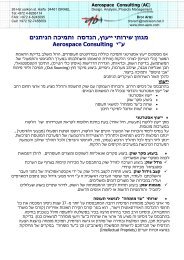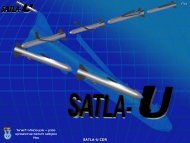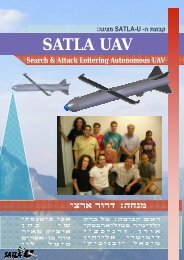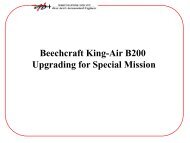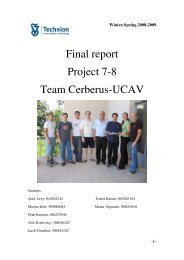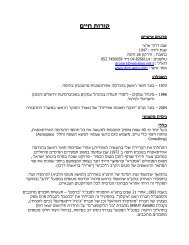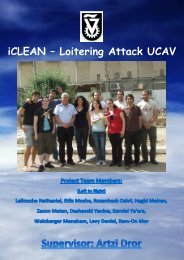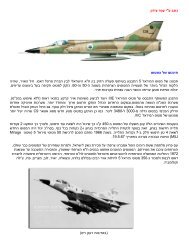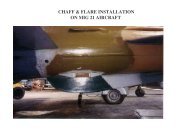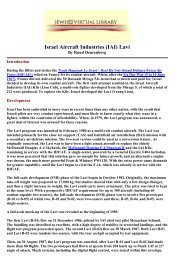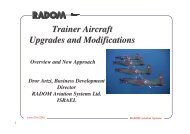iCLEAN â Loitering Attack UCAV - aero.com
iCLEAN â Loitering Attack UCAV - aero.com
iCLEAN â Loitering Attack UCAV - aero.com
You also want an ePaper? Increase the reach of your titles
YUMPU automatically turns print PDFs into web optimized ePapers that Google loves.
WIND TUNNEL TESTIn order to proceed with the performance calculations and flight controldesign, and validating our design as it is, a wind tunnel test had to beconducted to determine the stability derivatives and <strong>aero</strong>dynamiccharacteristics of a real model of the UAV. First, a wind tunnel wasdesigned, and then manufactured using a rapid prototyping method. Thetest was conducted at a subsonic tunnel due to its <strong>com</strong>patibility with ourrequirements and flight conditions.A full testing plan was established and carried out, testing the aircraft<strong>aero</strong>dynamic behavior in the presence of various angle of attack, slipangles, with and without canards.The whole process will described next.MODEL SIZINGGeneral instructions:1. Max. Length: 100 cm – As a result of balance rod length, stabilityand sensitivity limitations.2. Max. Section area: 2-4% of cell’s section area.3. Model should be as light as possible – In order to minimize thenon-<strong>aero</strong>dynamic loads on the balance rod and keep results asaccurate as possible.4. Rear mount for balance rod should be bigger by about 6 mm thanthe balance rod’s diameter in order to prevent any contactbetween the internal surface of the model and the balance rod.5. Model shouldn’t be too small in order to get accurate results.6. Wing tips should be away from the cell’s walls - In order toprevent any flow disruptions near the cell walls.According to the <strong>UCAV</strong> real flight conditions we have done theexperiment in the sub-sonic wind tunnel, and due to the tunnelproportions the max width of our <strong>UCAV</strong> model could be 50 cm so wecreated a scale replica of 1:7 scale from the 3m wing span <strong>UCAV</strong> usingthe method of Rapid Prototyping (3D printing).32



